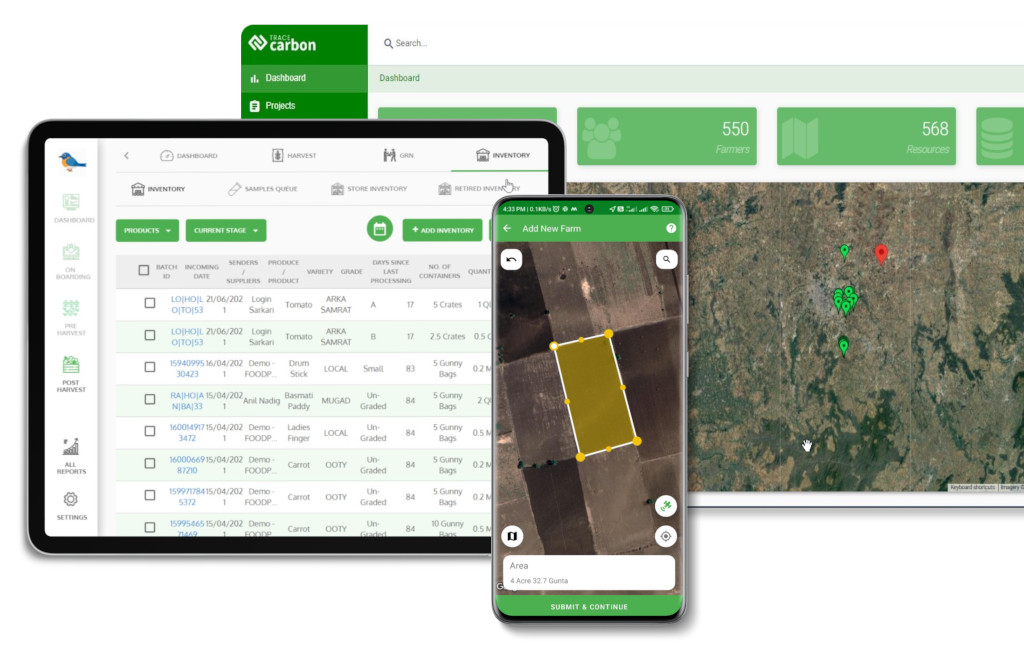Contact: +91 99725 24322 |
Menu
Menu
Quick summary: EUDR compliance for SMEs can’t wait until 2026. Learn why early action is critical to protect EU market access and how to get EUDR ready now.

Many small and medium-sized enterprises (SMEs) see the EUDR compliance for SMEs deadline of June 30, 2026, and assume they have plenty of time. On paper, that’s true; SMEs are not required to submit their own Due Diligence Statements (DDS) until then. But in reality, the clock is already ticking.
EUDR Compliance for SMEs is often misunderstood. While SMEs are not required to file Due Diligence Statements (DDS) until June 30, 2026, delaying preparation could cost them EU market access. Larger operators already need supplier data, GeoJSONs, legality documents, and risk assessments to file their own DDS today. If SMEs cannot provide this evidence, buyers may shift to more compliant competitors. Building audit-ready traceability takes months, not weeks, so early action is essential. For SMEs, EUDR compliance is not just a legal deadline; it’s a business-critical step to remain competitive in the European market.
Larger EU operators and importers are filing DDS now. To do so, they must collect SME supplier data, including GeoJSON geolocation files, land tenure and legality documents, and risk assessments, to prove their supply chains are deforestation-free and legally sourced. If SMEs cannot provide this evidence today, their goods may not even be considered by EU buyers.
The illusion of time is dangerous. Waiting until 2026 doesn’t just mean scrambling to get compliant at the last moment; it could mean losing contracts and market access long before the official deadline. This article will show why SME EUDR deadlines are effectively already here, what risks SMEs face by delaying, and how they can take practical steps now to build trust, stay competitive, and secure their place in the European market.
Key takeaways
Do SMEs need to comply with EUDR before 2026?
Yes, while SMEs are not legally required to file DDS until June 30, 2026, they must already provide GeoJSON data, legality documents, and risk assessments to EU operators who are filing now. Waiting risks losing buyers and market access.
At first glance, the regulation seems clear: SMEs don’t have to file their own Due Diligence Statements (DDS) until June 30, 2026. This creates the impression that smaller players can “wait it out.” But that’s only half the story.
In practice, if you’re an SME supplying to EU operators or larger exporters, your compliance clock has already started. Those operators are filing DDS now, and they need your GeoJSON farm polygons, legality documents, and shipment-level risk notes to build their evidence packs. Without it, they can’t submit, and your goods may be excluded from EU trade flows.
SME exemption ≠ SME delay. Think of it less as a deadline and more as a dependency: your buyers are already under obligation, and you’re part of their compliance chain.
Discover our step-by-step blogs on EU DDS filing and understanding the full scope of EUDR to stay audit-ready.
From scope to submission, get it right.
Learn exactly which products are in the EUDR scope and how to file a compliant DDS in the EU TRACES system.
Why Waiting Until 2026 Is Risky
On paper, SMEs have until June 2026 to submit their own DDS. But in practice, waiting could cost them EU buyers and contracts long before that date. Here’s why:
EU operators are already filing DDS. If you can’t provide GeoJSONs, legality proof, and risk notes on demand, buyers will move to suppliers who can. Contracts won’t wait for 2026.
SMEs aren’t “exempt”; they’re dependencies in a buyer’s compliance workflow. If you can’t deliver, you’re cut from the chain.
Collecting farm-level geolocation data and legality docs from dozens or hundreds of smallholders isn’t a quick fix, it can take months of training, verification, and digitization.
SMEs who wait until 2026 will face a compliance traffic jam. Everyone will scramble at once, driving up costs and overwhelming auditors.
Non-compliant SMEs don’t just risk shipment rejections; they risk being labeled unreliable. Once buyers blacklist a supplier, winning back trust is nearly impossible.
Early adopters become “preferred suppliers.” SMEs who deliver clean evidence packs gain leverage in price negotiations.
A coffee cooperative in Uganda with 200 smallholders delays collecting geolocation data. Their EU buyer turns to a rival co-op already using digital portals. Result: one co-op loses a shipment contract worth millions, while the other secures a long-term buyer relationship.
The real SME deadline isn’t June 2026; it’s the moment your buyer asks for evidence. If you can’t supply it, you’re out.
For SMEs, compliance is often seen as a cost. But in the context of EUDR, early compliance is actually a growth strategy.
When EU buyers are racing to file DDS, suppliers who show up with complete evidence packs GeoJSONs, legality docs, and risk notes ready to drop into TRACES instantly become the easiest partners to work with. And buyers always reward “low-friction” partners with contracts.
Being the supplier who cuts filing time by 50% gives you bargaining power on price and volume.
European importers are under intense pressure from regulators, NGOs, and consumers. Suppliers who make compliance seamless don’t just help buyers—they become part of their brand promise. Trust at this level translates into repeat contracts.
SMEs can position themselves not just as product suppliers, but as compliance partners that de-risk entire supply chains.
Early EUDR compliance dovetails with existing certifications like FSC, PEFC, and Fairtrade. This creates a double benefit: SMEs not only meet regulatory requirements but also strengthen their sustainability story with downstream brands.
SMEs can market themselves as both audit-ready and certification-aligned, turning compliance into a sales differentiator.
SMEs often feel EUDR is “built for the big players,” but the truth is every supplier, no matter the size, is part of the chain. The smartest SMEs aren’t waiting until 2026, they’re building their compliance muscle today. Here’s a practical roadmap:

Identify every farm or plot contributing to your shipments, no matter how small. Traceability starts with knowing who and where.
Gather exact farm boundaries in standardized formats. Avoid PDFs or hand-drawn maps, they won’t pass EUDR checks.
Secure and digitize land tenure documents, farmer IDs, and harvesting permits. Legality is as critical as deforestation-free status.
Bundle all data GeoJSONs, legality docs, and risk notes into shipment-specific folders. One shipment = one pack = one DDS.
Move from paper and spreadsheets to secure, digital, audit-ready systems that store data for 5+ years.
Early movers will position themselves not as small suppliers scrambling to comply but as strategic partners who de-risk EU buyers’ compliance obligations. For SMEs, that’s the difference between being a commodity provider and being a trusted long-term partner.
For many SMEs, the challenge isn’t willingness, it’s capacity. Collecting GeoJSONs from hundreds of smallholders, verifying documents, and preparing DDS-ready evidence packs sounds overwhelming if all you have are spreadsheets and PDFs. The good news? The right digital tools can turn EUDR from a burden into a growth opportunity.

Onboarding platforms make it simple for farmers and suppliers to upload geolocation data, permits, and IDs directly, no endless email chains.
Think of it as a “self-service counter” for compliance, farmers handle their own submissions, and SMEs get structured, usable data.
By lowering the friction for suppliers, SMEs can scale compliance without scaling admin costs.
AI can automatically check whether a farm polygon overlaps deforested land, whether CRS formats are correct, or if permit details are incomplete.
Imagine having a compliance officer that works 24/7 and never makes typos.
AI doesn’t replace human oversight, it multiplies it, catching errors before they turn into costly shipment delays.
Immutable, tamper-proof logs ensure every compliance action is recorded and stored for regulators. This isn’t about shiny tech, it’s about audit survival.
A shoebox of receipts won’t survive 2028. Blockchain gives you an indestructible vault of truth.
SMEs who embrace blockchain aren’t just compliant, they send a powerful trust signal to buyers and regulators.
Integration with TRACES means SMEs can generate shipment-specific DDS packs that EU operators can file immediately.
Instead of handing over documents piecemeal, SMEs deliver a “plug-and-play DDS pack” that buyers can drop straight into TRACES.
SMEs who provide TRACES-ready packs shift from being compliance burdens to compliance accelerators, a huge differentiator in competitive sourcing.
SMEs who adopt these tools early don’t just survive EUDR—they thrive by becoming preferred partners. In a world where EU buyers are looking to cut risk and simplify compliance, the suppliers who show up with clean, validated, and digital-ready evidence will win every time.
SMEs often fear that EUDR compliance means endless paperwork, costly consultants, or months of chasing suppliers. TraceX EUDR Platform turns complexity into a simple, digital workflow that SMEs can actually manage.

Instead of emailing surveys or PDFs, SMEs can invite their farmers and suppliers to upload GeoJSONs, permits, and IDs directly into TraceX.
It’s like giving every supplier their own compliance “front desk”easy, self-service, and standardized.
Once data is in, TraceX auto-generates TRACES-ready DDS evidence packs tied to each shipment or PO.
Instead of handing buyers loose papers, SMEs deliver a “compliance briefcase” they can drop directly into TRACES.
TraceX AI checks for missing data, suspicious polygons, or legality red flags before shipments leave port.
Think of it as a proactive compliance radar that spots risk while you still have time to fix it.
Every document, GeoJSON, and DDS is securely stored in blockchain-backed logs for inspection anytime.
SMEs don’t have to worry about lost files or regulator requests years later, it’s all in one place.
Struggling with EUDR requirements?
Learn how to
Understand the roles of operators and traders and
Conduct risk assessments that pass audits.
Legally, SMEs are not required to file their own Due Diligence Statements (DDS) until June 30, 2026. However, if they supply to EU operators, they must already provide geolocation (GeoJSONs), legality documents, and risk notes so buyers can file DDS today. Waiting risks market access.
SMEs must provide farm-level geolocation data (GeoJSON/CSV), land tenure and legality documents, farmer IDs, and shipment-specific risk assessments. This evidence is required for importers and operators to compile their DDS in TRACES.
SMEs should start by mapping suppliers, collecting GeoJSONs, verifying legality documents, and creating shipment-based evidence packs. Using digital traceability tools ensures audit-ready storage for 5+ years and simplifies sharing with EU buyers.
